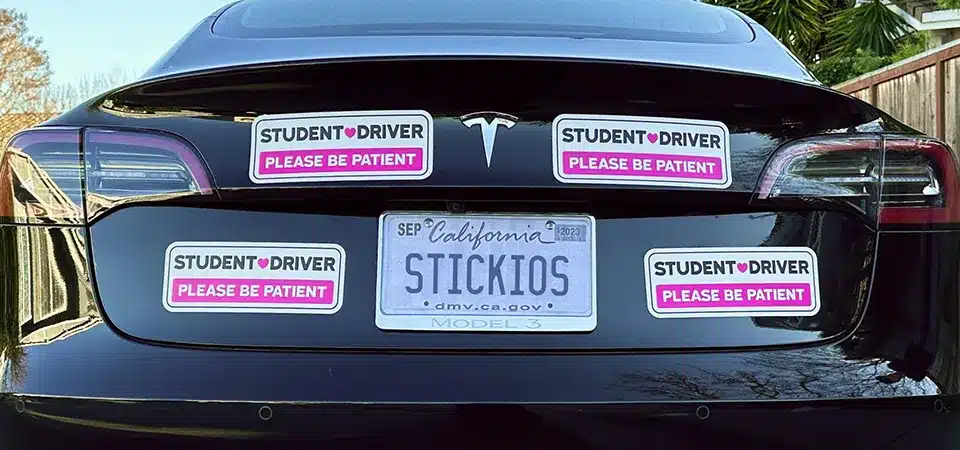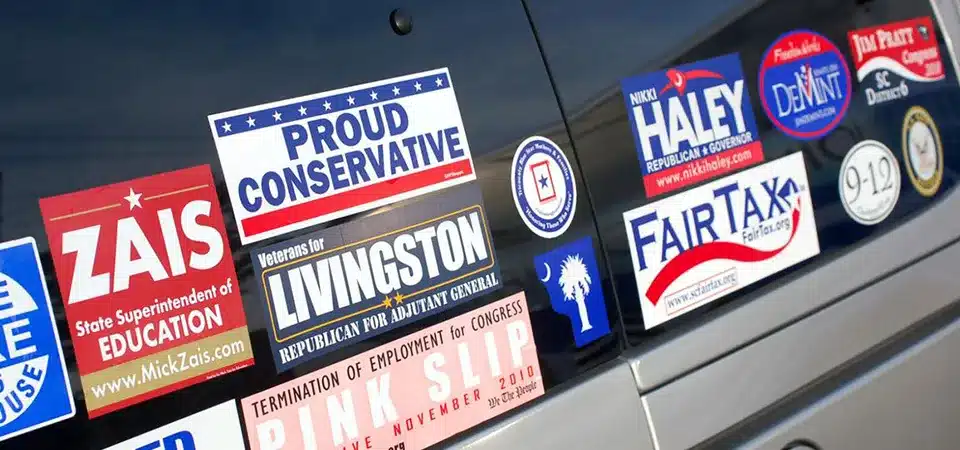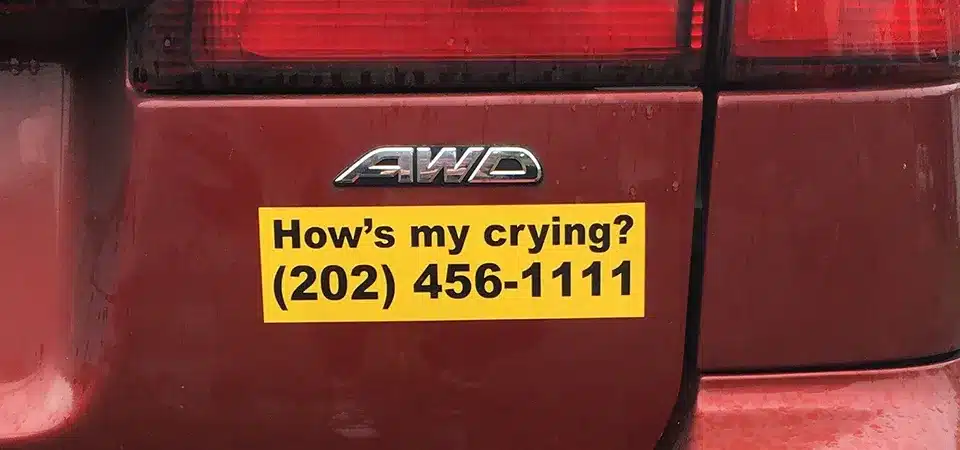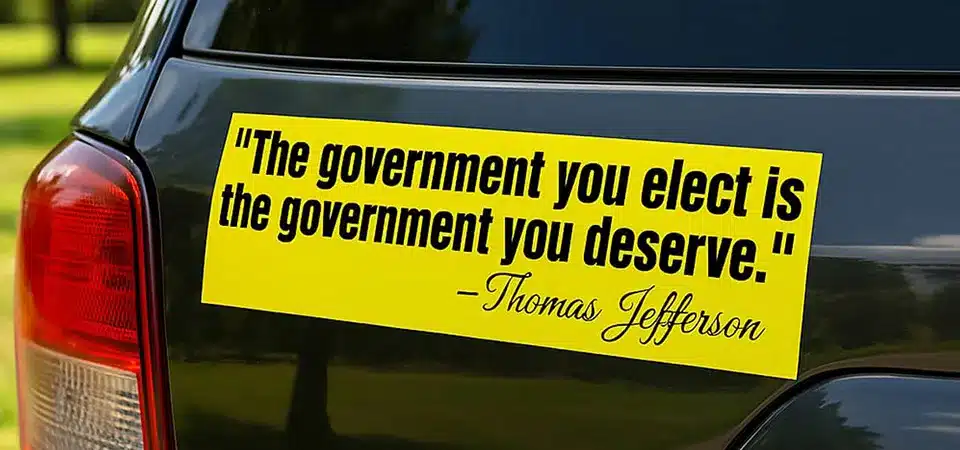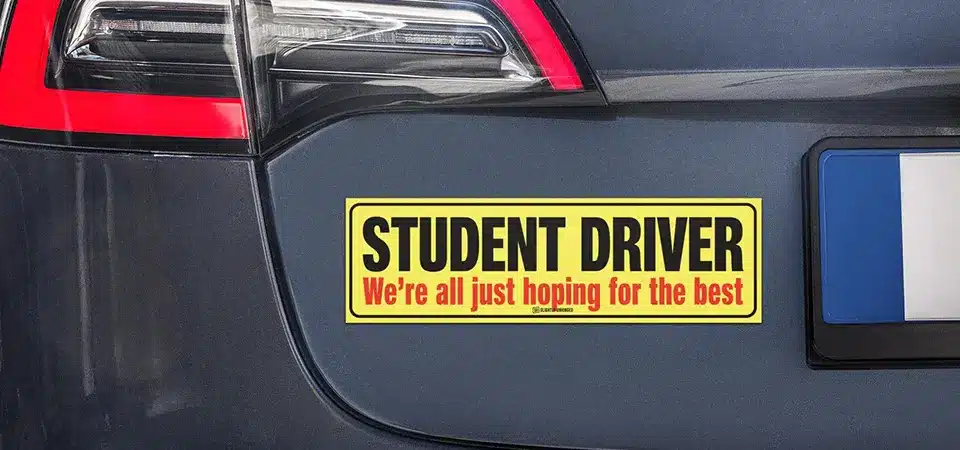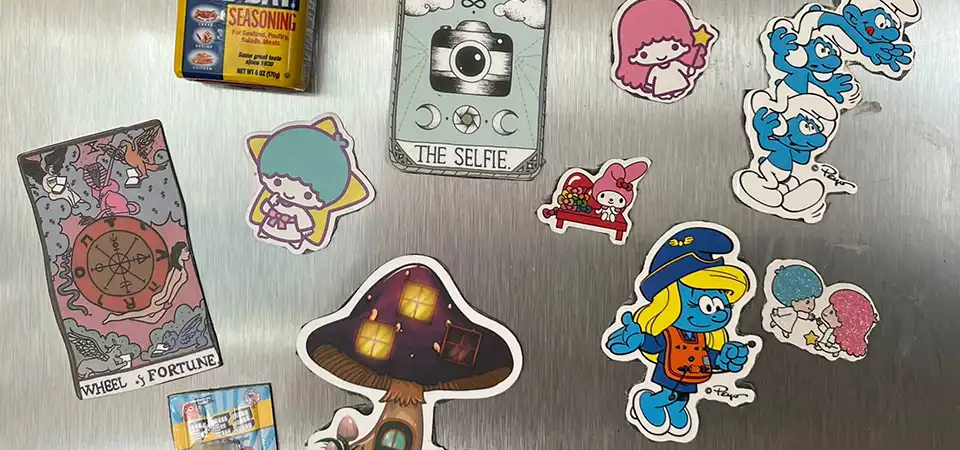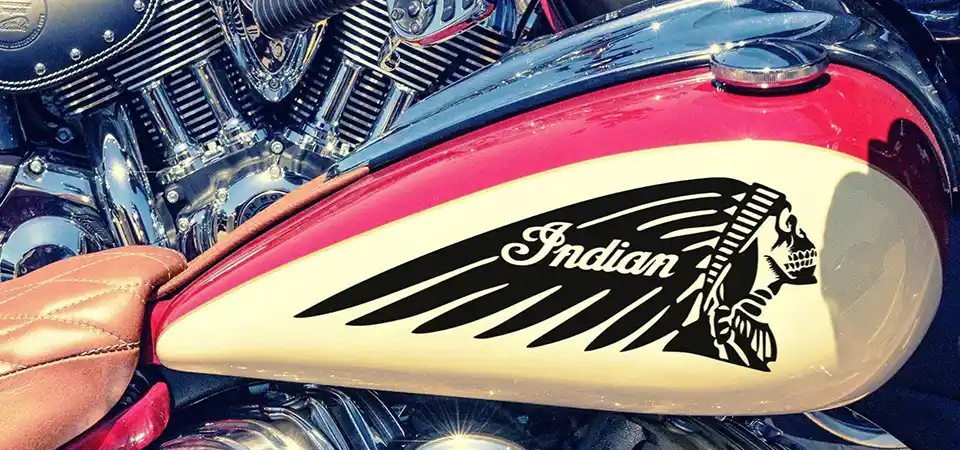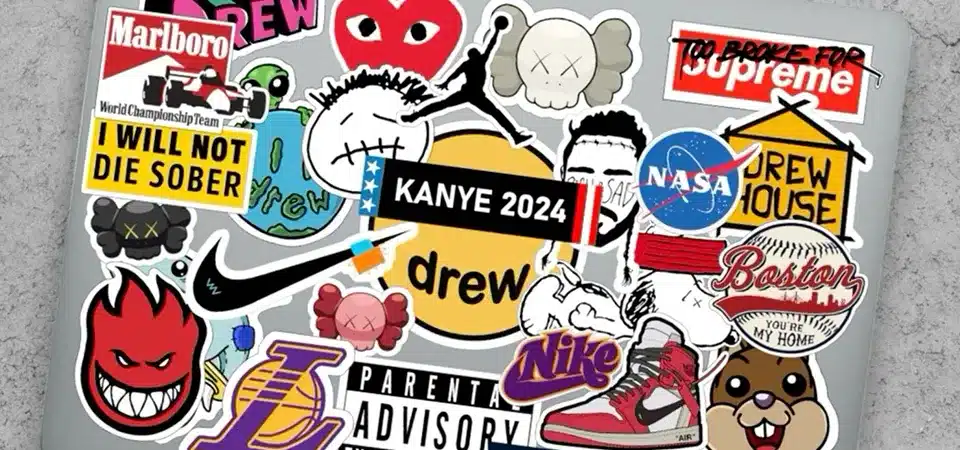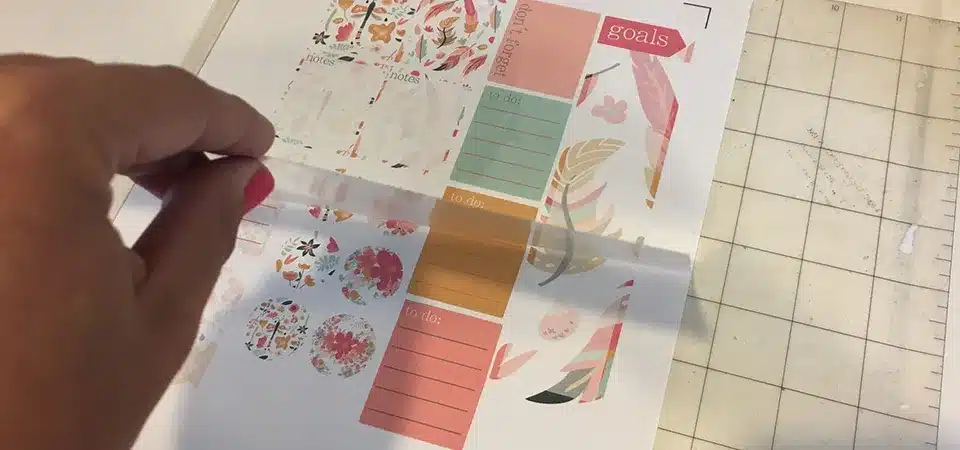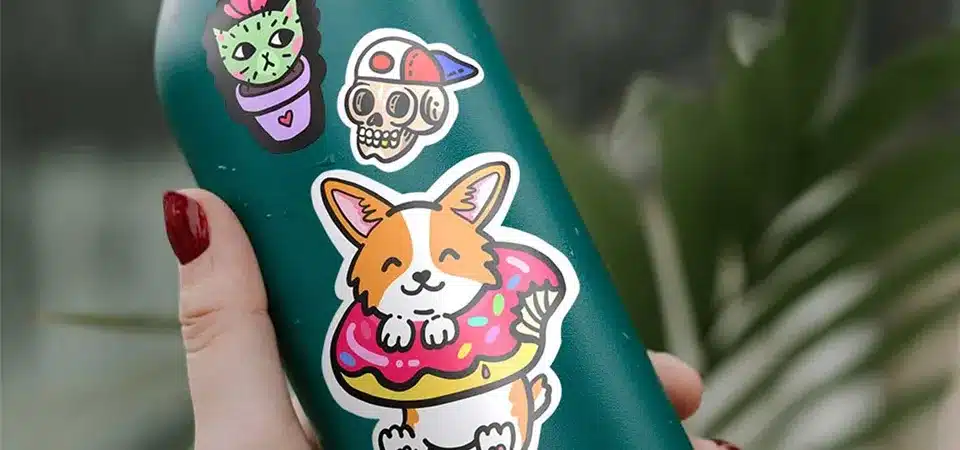Stuck in traffic, you see countless bumper stickers. Ever wonder about the stories behind the most famous ones? Here are the top 10 that shaped our culture.
The most famous bumper stickers include political slogans like “I Like Ike,” humorous phrases like “My Other Car Is a Porsche,” and social statements like the Darwin Fish. These simple, bold messages became viral sensations long before the internet, shaping culture one car at a time.
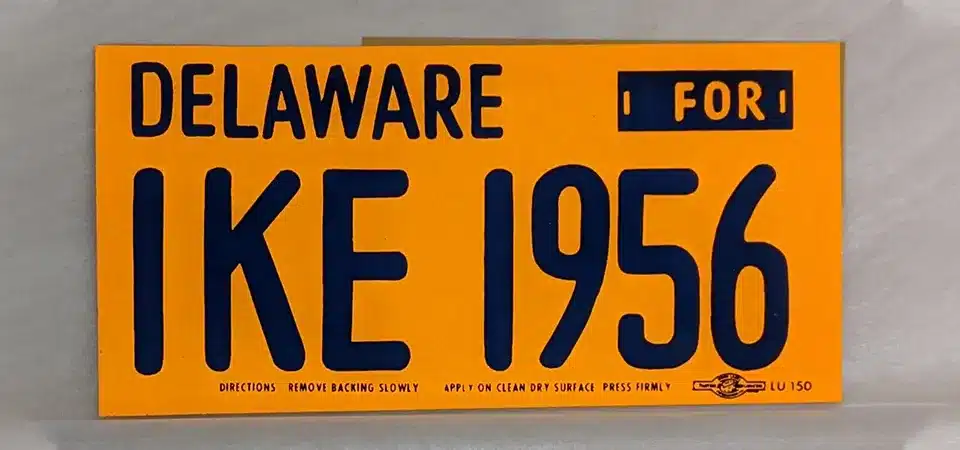
These stickers are more than just adhesive vinyl. As someone who lives and breathes sticker marketing, I see them as tiny time capsules of culture on wheels. They prove that a simple message can spark emotion and conversation. Before we dive into the top 10 list, let's go back to the very beginning.
How Were Bumper Stickers Born?
Think bumper stickers are a modern fad? Their origins are far more clever and commercial. Let's peel back the history of these mobile messages and see how they started.
Bumper stickers were invented in the 1940s by Forest P. Gill, a Kansas City printer. He combined new fluorescent ink with adhesive-backed paper, creating a durable, highly visible sign. Early versions were tourist souvenirs for attractions like Rock City in Georgia.
Before Forest P. Gill had his brilliant idea, people would tie cardboard signs or metal plates to their car bumpers with wire. They were clumsy and fell apart in the rain. Gill's innovation changed everything and created a whole new industry—an industry I am proud to be a part of today.
The Material Innovation
Gill's real genius was combining two new technologies. First was pressure-sensitive adhesive, which let the sticker be applied easily without messy glue. The second was the use of daylight fluorescent inks, also known as Day-Glo. This made the stickers incredibly bright and impossible to miss on the road.
From Tourism to Politics
The first major use wasn't political, but commercial. The team behind the Rock City tourist attraction near Chattanooga, Tennessee, hired Gill to produce "See Rock City" bumper stickers. They gave them away to visitors, turning thousands of cars into mobile advertisements. It was a marketing revolution. It wasn't until the 1952 presidential election that the political bumper sticker as we know it was born with the simple, powerful slogan: "I Like Ike."
What Are the Top 10 Famous (and Cliché) Bumper Stickers?
We all know a few classic bumper stickers by heart. But what makes a sticker truly famous, even a bit cliché? Let's count down the top 10 that have become cultural icons.
The top 10 famous bumper stickers range from political powerhouses like “I Like Ike,” to cultural icons like the "COEXIST" sticker, the Darwin Fish, and humorous quips like “Honk If You Love Jesus.” They represent major cultural moments and ideas.
In my sticker business, we often get requests to recreate or parody these classics. Their designs are timeless because they communicate a clear, bold message instantly. Here are the ones that have truly stood the test of time.
| Sticker | Era/Origin | Cultural Significance |
|---|---|---|
| I Like Ike | 1952 | The first widely successful political bumper sticker, setting the standard for all future campaign marketing. |
| See Rock City | 1940s | The commercial pioneer that proved the power of turning customers' cars into mobile billboards. |
| Honk If You Love Jesus | 1970s | An interactive and simple expression of faith that invited a response from other drivers. |
| My Other Car Is a... | 1980s | A popular joke format used for humblebrags ("a Porsche") or nerdy humor ("the Millennium Falcon"). |
| COEXIST | 2000 | A call for interfaith tolerance, cleverly using religious symbols to spell out the word. |
| Darwin Fish | 1980s | A witty and controversial response to the Christian Ichthys fish symbol, representing science and evolution. |
| Keep on Truckin' | 1970s | A symbol of the laid-back, anti-establishment counter-culture, originating from an R. Crumb comic. |
| Don't Tread on Me | 1775/Modern | A historical symbol of American independence, now widely adopted by libertarian and conservative groups. |
| Alumni Sticker | Ongoing | A statement of pride, identity, and affiliation with a specific university or college. |
| Stick Figure Family | 2000s | A polarizing yet hugely popular way to personalize a vehicle by representing one's family members. |
How Has Bumper Sticker Culture Evolved?
From simple slogans to mobile memes, bumper stickers have changed. The messages are different, and so are we. Let's look at how this culture has evolved over the decades.
Bumper sticker culture evolved from broad political and tourist slogans to highly personalized expressions of identity. The rise of niche humor, social justice movements, and custom printing has transformed them from mass messages into individual statements, much like a social media bio.
The stickers people order from my shop today look very different from the ones that were popular 50 years ago. The evolution tracks perfectly with our society's shift from mass culture to a collection of highly specific subcultures.
From Broad to Niche
In the beginning, stickers had to appeal to millions to be successful, like "I Like Ike." By the 70s and 80s, things got more specific. Stickers started representing subcultures, like the Grateful Dead's dancing bear or the "Keep on Truckin'" guy. They were signals to other people "in the know."
The Rise of "Sticker Wars"
By the 90s and 2000s, the political climate grew more divided, and bumper stickers reflected that. You started seeing cars with dueling stickers—one supporting a cause and another one right next to it making fun of that cause. The back of a minivan became a political battleground.
The Digital Age Influence
Today, the culture has fragmented even more. The ease of custom printing, which is the core of my business, allows for hyper-personalization. People put memes on their cars. Stick figure families brand a vehicle as belonging to a specific family unit. I've even printed stickers with QR codes that link to a personal blog or a band's music. The bumper sticker has become a physical extension of our online profiles.
How Can You Create Your Own Custom Bumper Stickers?
Got a brilliant idea for a bumper sticker? Making your own is easier and more affordable than ever before. Here's how you can turn your concept into a reality.
To create a custom bumper sticker, first finalize your message to be short and bold. Then, create a simple, high-contrast design. Finally, choose a durable, waterproof material like laminated vinyl and find a reliable printer that offers custom shapes and sizes.
As a professional sticker printer, I help people bring their ideas to life every day. You don't need to be a graphic designer to make something great. Just follow three simple principles: message, design, and material.
1. The Message: Keep It Simple
A bumper sticker is not a book. It's a headline. You have about three seconds to get your message across to another driver. The most effective stickers are short, direct, and easy to read. A good rule of thumb is to keep it under seven words.
2. The Design: Contrast is King
The best bumper stickers use bold, simple fonts and high-contrast colors. Black text on a yellow or white background is a classic for a reason—it's the most readable from a distance. Avoid thin fonts and complex images like photos. Make sure your design file is high-resolution (at least 300 DPI) to ensure a crisp, professional print.
3. The Material: Durability Matters
This is the most important part. A bumper sticker lives a hard life. It has to endure sun, rain, snow, and dirt. A paper sticker will be destroyed in a week. You must use a waterproof vinyl material with a UV-protective laminate. The laminate is a clear top layer that acts as armor, protecting the ink from fading and scratches. This ensures your message lasts for years, not days.
What Is the Enduring Appeal of Bumper Stickers?
In an age of social media, why do we still use these simple stickers? Our cars are a unique public-private space. Let's explore why these simple adhesives endure so strongly.
The enduring appeal of bumper stickers lies in their ability to be a low-risk, high-visibility form of self-expression. They turn a generic car into a personal statement, broadcasting our beliefs, humor, and identity to the world in a simple, tangible way.
Even with the internet in our pockets, there's something powerful about making a statement in the physical world. Bumper stickers fill a unique human need to express ourselves to the community around us.
A Voice in Traffic
Driving can be an isolating and anonymous experience. A bumper sticker gives you a small voice. It's a way to signal your humor, your beliefs, or your favorite band to the strangers you share the road with. It can create a brief moment of connection—or disagreement—that breaks up the monotony of a commute.
Tangible Identity
A Facebook post is fleeting, but a bumper sticker is a commitment. It's a physical piece of your identity that you display in the real world. It says, "This is who I am and what I care about when I'm not behind a screen." It's a small act of claiming public space for personal expression.
The Original Viral Content
Long before we had "shares" and "retweets," we had bumper stickers. They are the original viral content. They tap into our fundamental desire to find our tribe and belong to a group. Seeing a car with the same sticker as yours creates an instant, unspoken bond. It’s a simple, powerful way to say "me too."
Conclusion
From political slogans to personal jokes, bumper stickers are tiny canvases for big ideas. They prove that a simple, well-designed message can still make a powerful statement in our modern world.

